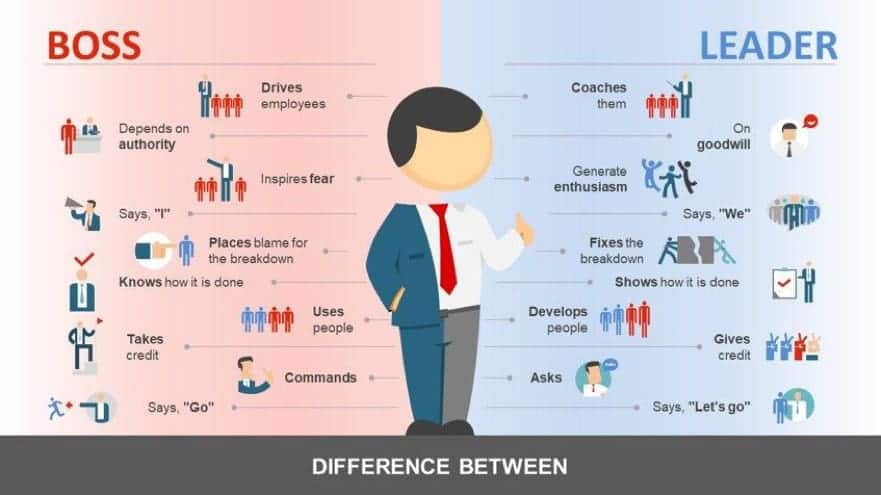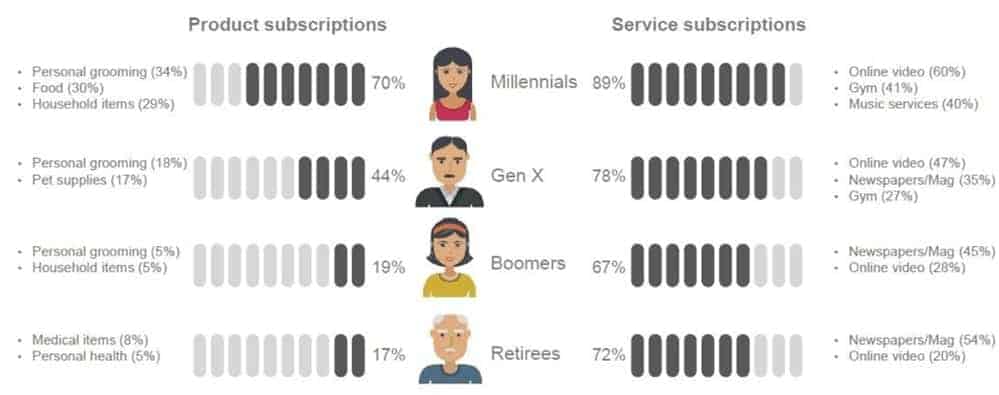
Managing Millennials
Three Millennial business leaders, Isaac Goldman of Vertican Technologies, Antonia Wong of TrueAccord, and Jonathan Goldberg of National Recovery, Inc. were invited by the RMAi to give a presentation on Managing Millennials.
Check out the recap below:
Who Are Millennials?
Anyone born between 1976-1997. While this may seem like a broad definition, the word Millennial defines much more than a specific age group. With such a large population, as well as being the first generation of digital natives, Millennials represent a new era. They are influencing significant shifts in the way all generations think about business and success.
A 2015 study done by the United States Census Bureau estimated 83.1 million Millennials in the United States.
What comes to mind when you think of a Millennial? They Google everything, they’re obsessed with their iPhones, and they take professional pictures of every meal they eat.
In the ARM industry, we tend not to think of them as business leaders. Because of this, Millennials are not always taken seriously.
What Do They Want?
Studies show Millennials share a strong desire to make a social impact. Not only are they ditching straws at Starbucks, but they’re pushing to make BIG changes in the world.
Antonia Wong, a Millennial, believes “When looking for our next opportunity, we tend to seek out companies, not jobs.”
According to the Governance Studies at Brookings report, “How Millennials Could Upend Wall Street and Corporate America”, by 2025 Millennials will make up 75 percent of the workforce.
The Breakdown:
- 1-in-3 adult Americans are Millennials.
- That’s 2x the amount of people than the entire population of California & Texas combined
- At 92 million people, this is the largest generation in the history of the US
What does this mean for the workforce? By 2020, there will be five generations working side by side. This means combining many different working styles. We need to start thinking of ways to get in front of the inevitable by developing the next generation of industry leaders.
Antonia Wong, What Sets Millennials Apart from Previous Generations?
“Millennials have an increased income compared to Gen X and Baby Boomers, but expenses have increased at a faster rate.”
According to a Pew Research Center analysis, 4-in-10 Millennials have a bachelor’s degree (or higher), making Millennials the most educated generation by far.
Millennials are also the fastest-growing group of renters. They enjoy jogging downstairs to the Yoga Studio located below their apartment and living in a cultured city with plenty of entertainment.
For Millennials, increased income means greater expenses, including student loan debt and rising rent costs. Millennials are also approaching parenting much differently than previous generations. Millennial and Gen X women are leaving the workforce due to lack of parental leave (that’s right, PARENTAL) and affordable childcare. Today, we see more fathers utilizing their bonding time with their newborns or adoptive children, and working parents are splitting the parenting responsibilities more evenly. More than ever, parental leave is extremely critical to Millennials in the workplace.
Antonia Wong says, “Even with much more to pay for, that desire to make a positive impact is strong. We are willing to pay a premium if it does some good, like buy Fair Trade Coffee, and buying products that provide something free to kids in underdeveloped countries, like Tom’s shoes.”
What sets Millennials apart from previous generation is not only their desire to make a social impact but their ability. Not only are they making this clear in the rising percentages in categories across generations, but by using their voices in the workplace.
Isaac Goldman, Managing Millennials
What do Millennials want? Isaac says, “Millennials look for leadership, not management. Figure out what they want and then meet them halfway– rethink engagement.”
How?
- Realize that money isn’t everything.
- Provide opportunities for learning and development.
- Help your employees achieve a work-life balance.
- Be mentors, not bosses.
- Create a strong company culture.
If, in six short years, millennials will make up 75 percent of the workforce, avoiding hiring them is not an option. Business leaders must learn how to engage employees much differently than they have in the past if they intend to grow and persist into the future.
Millennials look for more than just money when choosing to work for a company. What does this mean to you as a business leader? You must Make the Transition.
Make the Transition:
- Work-Life Balance: a new focus on family. Acknowledge the growing concern with parental benefits. A simple solution would be changing the name from maternity leave to parental leave and encouraging all employees to participate. Understanding that we will have so many generations are working side by side, consider a separate policy for “family leave” for those who need to step away to care for a sick parent or spouse, for example.
- Performance Management: a tool to foster employee growth and increase engagement by acknowledging employee contributions and celebrating beyond the normal one-year appraisal process.
- Flexibility: The millennial generation is more nomadic than any other, offering the option to work remotely gives employees more flexibility, and the ability to live in more affordable states.

Boss vs Leader
Isaac believes, “In trying to create change, we make the mistake of thinking the only person that needs to learn how to become a leader is ourselves. It only starts with me. I am in charge of getting the message across. This means teaching others what I have learned.”
He continues on, “The difference between a Boss and Leader is the approach and the way you communicate ideas and solutions. For positive results, we must change the way we lead Millennials. Moving away from individual success into collective success.”
Develop a Culture of Leader
- Pro Tip: Hold a monthly or quarterly Leadership Lunch & Learn or Chat-n-Chew
- Get together and enjoy a local favorite! Not only will this leave your employees mouths’ watering, but it creates collective success.
Jonathan Goldberg, Millennial Consumer Engagement & Interaction
A part of understanding employee engagement amongst Millennials can also be translated into understanding the Millennial consumer. Millennials are no longer using landlines or mailing in checks to pay bills. Millennials are Digital Natives. This means:
- They borrow online.
- They pay online.
- They communicate online.
The entire Millennial world exists online. Because of this, Millennials are hyper-communicative. They want to control where, when, and how they communicate.
The Subscription Generation
According to a Statista Poll, there are currently 2.1 million apps—basically, there’s an app for everything. Are you out of bags for your fancy trash can? Download the SimpleHuman app. Can’t make it to the grocery store this week? Order meal plans straight to your door with HelloFresh.
Not only do companies offer easily accessible apps, they also offer subscriptions, an even easier solution. Millennials demand simple solutions. The convenience of ordering, paying, and communicating through your phone makes Millennials the Subscription Generation.

Jonathan says, “Millennials are eager to grow and learn, they are information and data seekers. They want to understand how financial solutions will help both short and long term. With 2.1 million apps available, they REQUIRE a variety of options.”
Consumers are asking for more tech-enabled communication. Believe it or not, email is being phased out. Millennials want pull vs. push, they want an app or a portal, and they want to engage on their terms.
How can we connect with the Millennial consumer?
Meet Millennials Where They Are
- Multi-channel communication options
- Require both automated and human based communication
- Offer relatability: Millennials talking to Millennials
- Form vs. matter: language choice and style
- Be clear: answer the goddamn question!
Engaging Millennials in the Workplace
- More Education
- Formal & Informal Training
- The forest through the trees—What lies ahead?
- Why are we doing what we’re doing?
- What’s next?
- Who will it help? How? Why?
- Data Driven
- Don’t just tell us, SHOW US!
- What is an Org Chart?
- A diagram that represents the structure of an organization to allow for more focused and easy-following collaboration
Q: How to attract (and retain) Millennial talent?
A: Make the workplace resemble the rest of their life! Offer an open workspace, gym membership, meals and snacks, PTO, and scheduling flexibility. Also, focus more on titles and educational opportunities. Create open communication for what’s next for the individual, in the company, or elsewhere.
It’s NOT All About the Money!
More than ever, consumers are asking more questions like, “What’s in it for me?” when paying off debt. In making decisions for their debt, they are no longer just considering money. The same way employment decisions aren’t all about money, neither are the decisions on debt. Getting into the mind of the consumer is essential. Telecommuting and collectors with access to consumer data is still not feasible from a compliance perspective. However, we have more flexible options like bringing children to work during inclement weather. Particularly beneficial to single parents, an intangible benefit with great value.
The Bigger Picture
Now that you understand your employees and your consumers are more alike than you may have originally thought, here’s how to apply everything you’ve read:
- Engage
- The success of your business may hinge on your ability to manage millennials effectively– Get involved.
- Include
- Take what you’ve learned and begin strategizing your recruitment, retention, and development plan.
- Prosper
- Your willingness to flex your management style, including how you’ve run your business operations to be more inclusive of this new generation, will save you money and time.
Get Moving
Share this article with your team.
Review your existing policies.
Do an employee engagement survey and be open to their suggestions.
Give it a try!
Sources:
https://www.census.gov/newsroom/press-releases/2015/cb15-113.html
https://www.statista.com/statistics/276623/number-of-apps-available-in-leading-app-stores/
About Vertican
Vertican Technologies provides the collection industry with best-in-class technology, making operations more efficient, compliant, and profitable. Our wide-ranging solutions include: Collection-Master, Q-Law, vMedia, YGC Solutions, vExchange, and Vertiply. With vExchange, your data can be augmented and analyzed at a central location. This includes data from all senders, receivers, and 3rd party vendors. vExchange’s data validation, coupled with its powerful analytics result in lower costs and better performance.
This article courtesy of Vertican Technologies.





